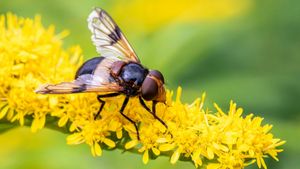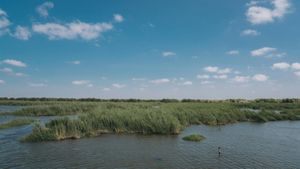Researchers are unlocking the mechanisms of auxin dynamics—critical for plant growth—particularly through the study of Arabidopsis thaliana cotyledons. A recent study identified how self-organizing and transient auxin flow, mediated by the PIN2 transporter, contributes to establishing auxin maxima at the tips of cotyledons. This discovery is pivotal as it deepens our comprehension of how plants coordinate growth and morphogenesis.
Auxin, a key plant hormone, orchestrates diverse physiological processes by modulating cell behavior through gradients and maxima, influencing growth and development. Traditionally, significant auxin accumulation at specific regions during development, known as auxin maxima, has been observed, yet the underlying mechanisms were not well understood. By focusing on Arabidopsis cotyledons, the researchers revealed several novel insights.
The study elucidated the role of PIN2, which is expressed predominantly within marginal cells of the cotyledon. It was shown to form what can be described as an auxin transport pipeline directed at the cotyledon's tip. Prior to the establishment of these cells' distinctive function, indole butyric acid (IBA) is converted to indole acetic acid (IAA), promoting PIN2 expression and leading to auxin flow toward the tip. Once auxin levels peak at the tip, it triggers pavement cell interdigitation and marks the moment when the TOB1 transporter is upregulated, sequestering IBA to vacuoles and reducing its availability.
The researchers emphasized how the transient nature of this system is intrinsically linked with auxin’s own feedback mechanisms. Initially, the auxin flow causes upregulation of PIN2 accumulation and activity, which is necessary for directing the auxin toward the apex of the cotyledon for proper growth. Once sufficient auxin accumulates at the tip, it activates the TOB1 signaling pathway, leading to the downregulation of PIN2 and halting the auxin flow.
Through fluorescence microscopy and genetic analyses, the researchers confirmed the dynamics of PIN2 localization. Their findings suggest the transport mechanism is self-regulating: as auxin induces its own cellular transport system, it can also regulate its own levels by initiating feedback loops through additional protein interactions. This feedback regulation establishes and sustains the necessary gradients for proper developmental processes.
The ability of the cotyledon to coordinate the interdigitation of pavement cells strongly correlates with the precise management of auxin flow. When PIN2 function is compromised, notable deficiencies arise concerning the morphology of these cells, leading to impaired growth and organization at the tips. The laser-ablation technique employed demonstrated the integral role of marginal cells: ablative treatment directly inhibited the interdigitation process, underscoring the necessity of these cells for the auxin dynamics at play.
This research has broader implications beyond just Arabidopsis. It raises intriguing questions about how similar processes might evolve across different plant species and contribute to the diversity of plant forms. Understanding the self-organizing characteristics of auxin flow could potentially inform agricultural practices aimed at optimizing growth and yield.
Future research directions could investigate the regulatory networks underpinning auxin synthesis and flow, and how external environmental stimuli might integrate with these internal signaling mechanisms. By connecting these complex pathways, scientists can potentially tap the knowledge gained from auxin dynamics to innovate strategies for crop improvement and ecological restoration practices.



